
The Machine Hall is the museum´s biggest gallery space. It was built in the functional style characteristic of its time, with eternite-clad walls and a concrete floor poured in sla ...
76 objects
Bil
Åkvagn för 4 personer. Den första förbränningsmotordrivna bilen som byggts i Sverige. I detta sista utförande från 1901 ligger en fotogenmotor under vagnsgolvet, vilken startas med ...
Motorcykel, trehjulig
Trehjulig motorcykel med motorn placerad mellan bakhjulen. Kraften överförs från motorn till bakaxeln med kugghjul. Bandbroms på bakaxelns differential och på framhjulets nav. Cude ...
Skruvpropeller, till båt
Ångmaskin, modell
Modell i skala 1:10 av atmosfärisk ångmaskin, "Eld- och luftmaskin". Uppfodrade vid 14 slag per minut c.a. 900 liter vatten från 55 meters djup. Till modellen hör en modell i samma ...
Ångturbin, för mottryck
STAL mottrycks ångturbin av stål. I mitten ett s.k dubbelroterande skovelsystem vilket driver två elgeneratorer. Turbinen är utrustad med ett flerskivigt skovelsystem som ger vissa ...
Väderkvarn, modell
Modell av väderkvarn. Text på föremålet: "N:o 101. Modell på 16 kantig wäderqwarn Stora Tisan kallad. Står på norrmalm. X.D.3.". I Jonas Norbergs förteckning från 1779 beskrivs mod ...
Gruvspel, modell
Skalmodell av gruvspel med två koniska linkorgar, friktionsbroms, överfallsvattenhjul, i obekant skala. Fungerar enligt följande: Vattnet samlas i den s.k. vattenpråmen- "kummern" ...
Personbil
Fyrsitsig personbil med tre dörrar, med ram av U-balk, tvärställda bladfjädrar och kaross av vanadium-stålplåt. Tändning med högspänningsspole, en för varje cylinder. Gas och tändn ...
Lysgasmotor
Fyrtaktsmotor enligt Ottos konstruktion. Liggande direktverkande encyl. Svänghul. Expolsiva blandningen är 9/10 luft, 1/10 gas som komprimeras till 11 atö. Ventilreglering. Tändni ...
Personbil
Scania 1902 för fyra personer. Motorn är tillverkad av Aster, Atéliers de Construction Mécanique l'Aster, Frankrike. Kedjedrivning till bakaxeln av de Diontyp. En Kemper motor med ...
Personbil
Personbil i form av en mindre hästvagnsliknande släpvagn "förspänd" med en "motorhäst", för två personer, med säten klädda med manchestertyg. Bilen kallades "Victoria Combination". ...
Bakhjul med motor
Motor och bakhjul, för cykel. Motorn monterades på pakethållarens plats och den medföljande bensintanken på det horisontella ramröret på en herrcykel. Magnettändning till två tänds ...
Flygmaskin
Planet är av typen monoplan och har en stomme av stål klädd med dural-aluminium. Vingarna är självbärande och ostagade. Det har plats för två besättningsmän med förare och färdmeka ...
Vattenhjul
Ångmaskin
Tvåcylindrig ångmaskin, s.k tvillingmaskin med trunkkolvar. Försedd med rundslid samt samt anordning för omkastning av rotationsriktningen. Skutet vevhus, smörjsystem för vevaxel o ...
Flygmaskin
Tvåsitsigt monoplan tillverkat av trälister, vävklädda vingar, stagande ståltråd. Skevningsbara vingar, höjdrodret bak och sidorodret regleras med wirar från förarplatsen. Två hjul ...
Ångmaskin
Balansångmaskin med pumpmekanism. Balansens vikt ca. 10 ton. Maskinen gjorde 10 fram- och återgående kolvslag per minut. Ångmaskinen: Cylinderdiameter: 1,625 m Kolvarea: 2,1 m2 S ...
Ångspruta
Dubbelverkande ångmaskin och pump på underrede för anspänning med två eller fyra hästar. Pannan är stående med eldstad i botten och rökavgång genom en skorsten på toppen. Utrustad ...
Cykel
Trehjulig cykel. Styrning med högerhandshandtag som påverkar kugghjul-kuggstång. Bromshandtag för vänsterhand. Kedjedrift. Två stora bakhjul, ett litet framhjul och "damsadel", vil ...
Ångmaskin
Ångmaskin med svängande cylinder och spiralpanna för eldning med blästerlampa, på fundament av cylindrisk vattentank på trefot av gjutjärn. Svänghjul för remskivor att driva mindre ...
Sweden's first passenger aircraft.
In the ceiling of the hall hung Sweden's first passenger aircraft, a German-made Junker F 13 from 1923. There was also a copy of the German Otto Lillienthal's hang glider from the 1890s, an autogiro - the predecessor of the helicopter - from 1932, a Swedish-built copy of the famous Blériot aircraft from 1911 and a double deck fighter plane, manufactured at Thulin's factories in Landskrona in 1917.
Samuel Owen's steam engine.
In the middle of the hall stands Sweden's oldest preserved steam engine. It is a so-called beam engine that was used at the Höganäs hard coal mine from 1832 to 1909 for water pumping. The machine, which is designed according to the principles of the Scotsman James Watt, was built on Kungsholmen in Stockholm by the Englishman Samuel Owen. The steam engine came to mean a lot for both industry and transport during the 19th century and the exhibition displayed a large number of steam engines representing different designs and areas of use. In other parts of the Machine Hall, you could study what technology was used in other areas of energy.
Muscles, wind and water.
Muscle power from humans and animals was our most important source of power well into the 19th century. In the section that described muscle power, among other things, a hand-operated fire extinguisher from the 18th century and older models of pedal wheels and horse walks were shown. In the section dealing with the power of the wind, models of, among other things, a windmill, a weather saw and the Näsudden wind turbine were shown. Sweden is rich in flowing water and hydropower has been of great importance throughout history. In the water power section, the development from simple water wheels over the advanced mining rigs of the 17th and 19th centuries to today's water turbines was shown.
The steam engine gets competition.
As an alternative to the coal steam engine, the steam turbine was developed at the end of the 19th century and at the beginning of the 20th century. Two Swedish contributions to this development were represented in the exhibition: the de Laval turbine and the Ljungström turbine
Another alternative to mainly smaller steam engines were hot air engines. Within this group, among other things, the Swede John Ericsson's hot air machine from 1855 and a modern Stirling engine, manufactured by Kockums in 1979, were shown. A final section dealt with internal combustion engines. This type of machine, which largely left its mark in the 20th century, was developed in the middle of the 19th century - first with gas as fuel and later with various petroleum products, such as kerosene and petrol.
From scooter to SAAB Ecosport.
One half of the Machine Hall was about different means of transport. Here you could initially follow the bicycle's development from the 18th-century scooter over the 19th-century penny farthings and safety velocipedes to today's mountain bike. In another section, the history of the motorcycle was shown - from Sweden's first motorcycle, a German Hildebrand & Wolfmüller from 1894 to a Husaberg of the year 2000 model from Sweden's last motorcycle manufacturer.
The section on cars began with Gustaf Erikson's kerosene-powered carriage from 1897, the first car with a combustion engine to be manufactured in Sweden. Here was also Stockholm's first car, a French Leon Bollée from 1897. Other cars on display include: Scania from 1902, Scania-Vabis model 1912, Ford model T manufactured in 1921, SAAB 92, model year 1952, Volvo PV 444 from 1949 and a SAAB Ecosport from 1992.
The Flygterrassen.
On the so-called Flygterrassen (flight terrace), which was accessed via a staircase in the Maskinhallen, the history of aviation in Sweden was shown with views towards other countries. Here there were, among other things, models of airplanes, airships and balloons, early radial engines and inline engines and Sweden's first sale engine. Up on the terrace, you could also view a real space rock and flags that have been on the moon.
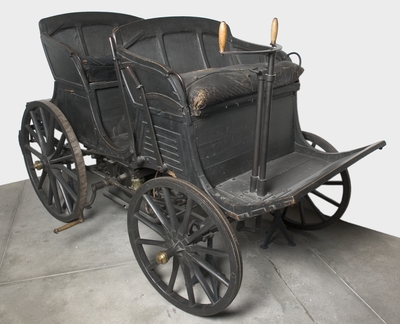

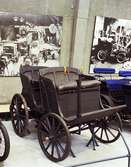
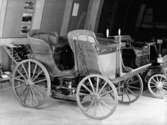


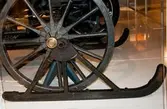
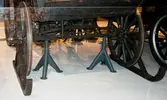
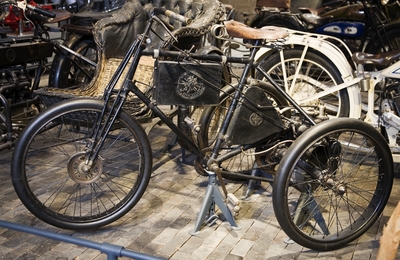


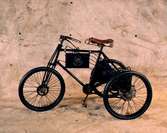
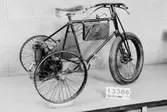
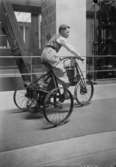
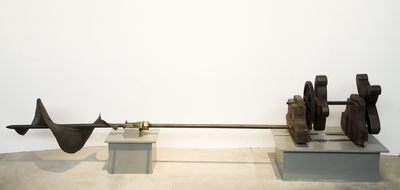
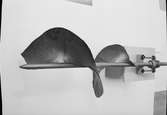
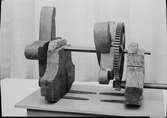
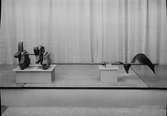
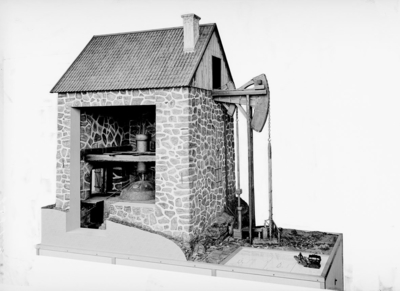

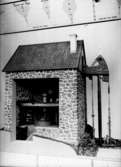


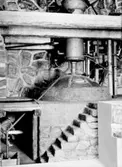

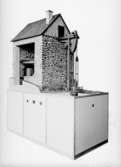

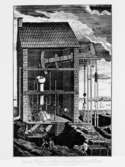
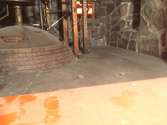

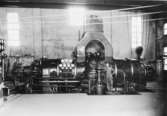
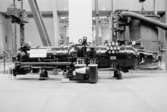
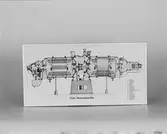
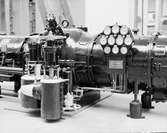
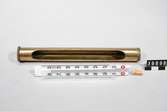
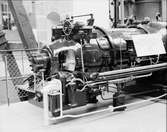
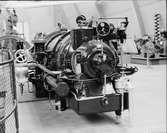
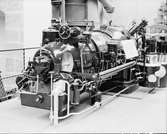
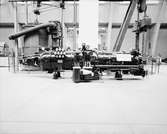
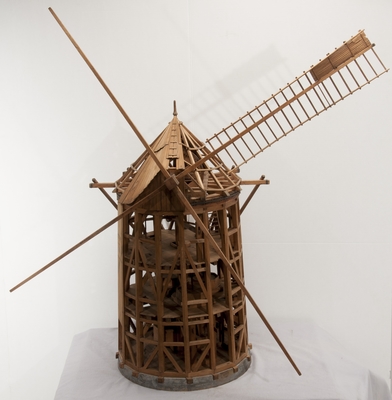
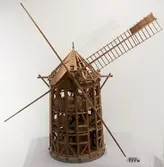
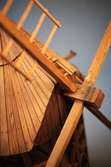
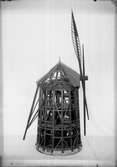
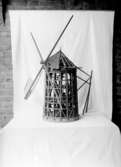
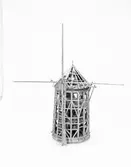


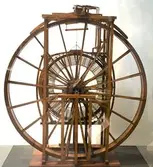
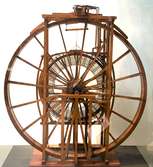
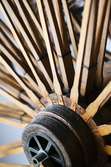
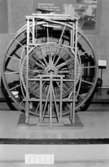


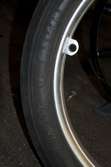

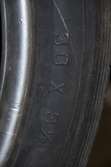
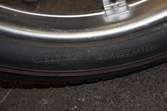
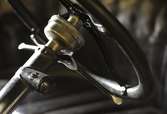
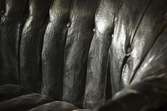
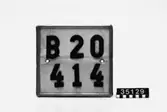
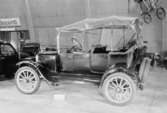
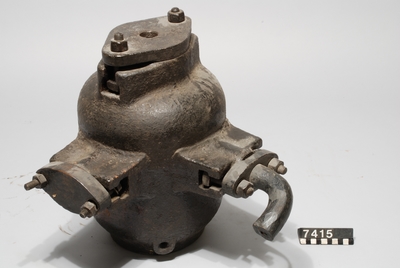
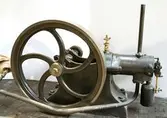

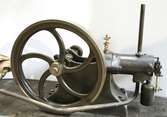
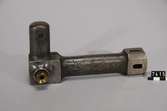


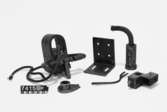
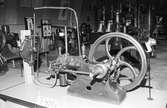
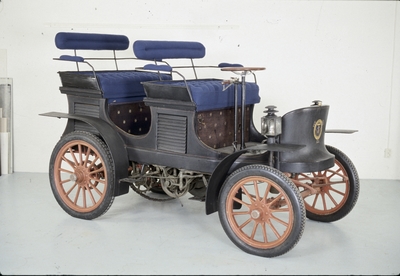
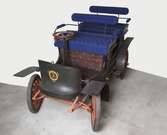
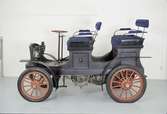
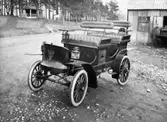
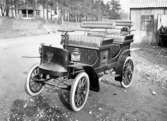
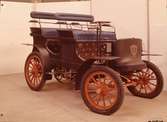

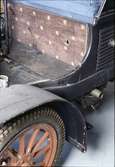

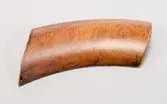

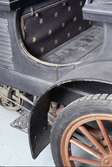
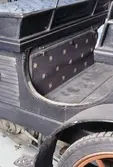
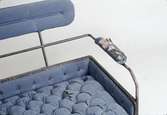

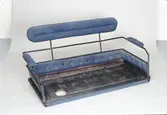


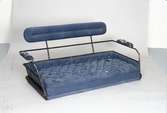
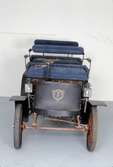
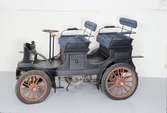


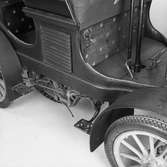
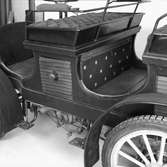
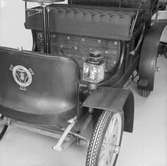
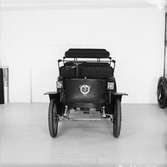

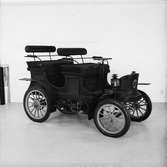
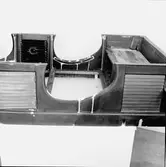
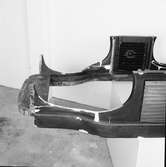
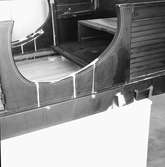
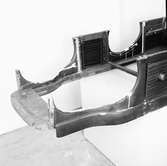
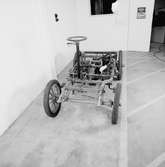
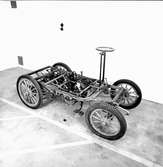
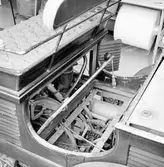

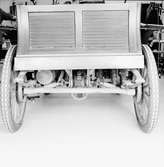
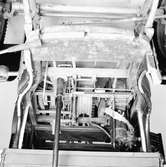
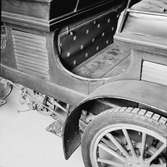
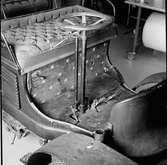

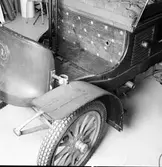

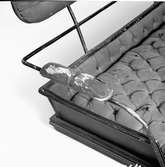
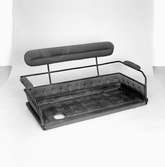

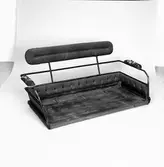

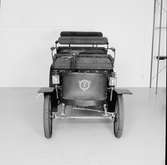
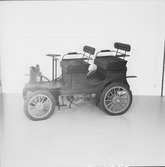
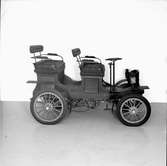

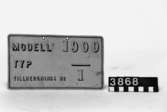
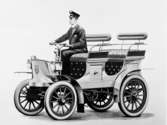
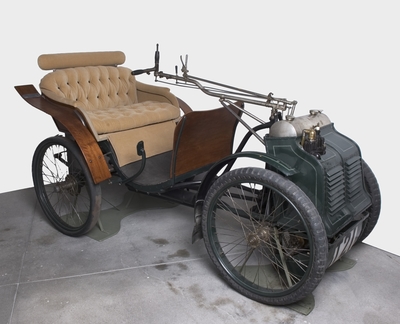
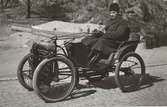

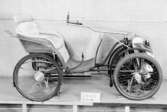
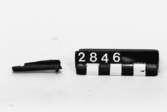

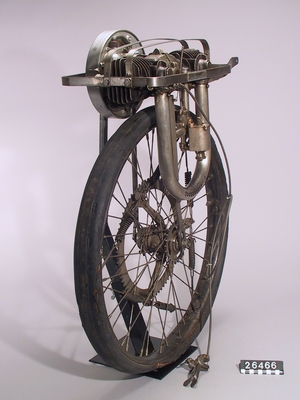
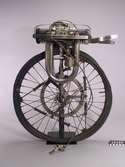
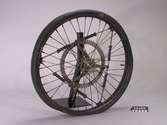
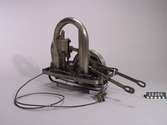
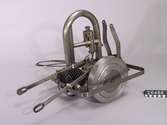

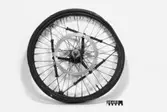
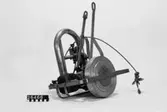
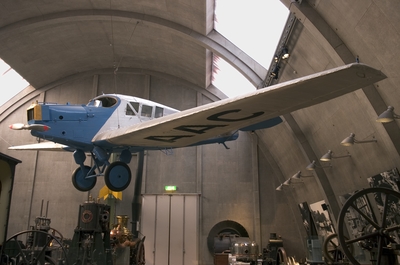
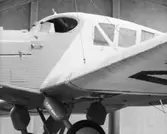
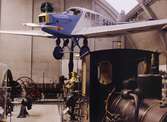

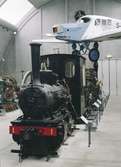

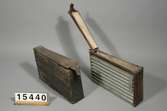
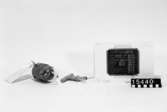
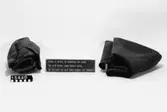
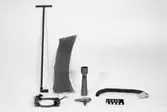

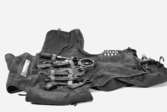

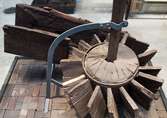
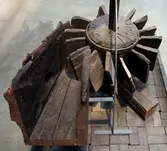

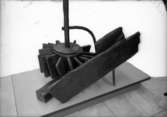
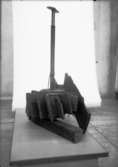

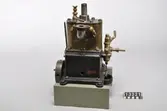


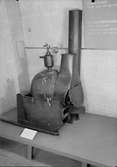
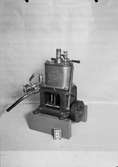
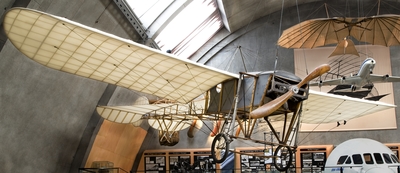
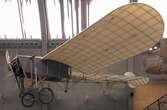

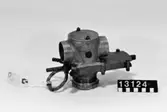


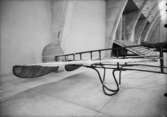
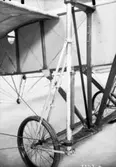



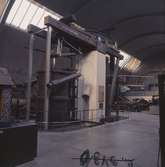

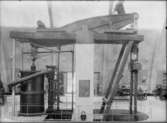
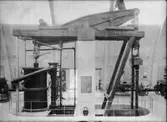
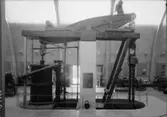


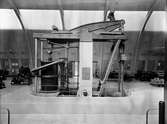
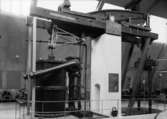


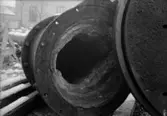
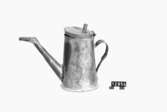
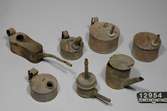
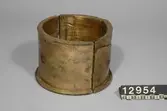

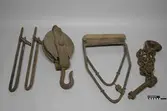
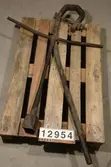


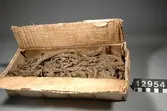
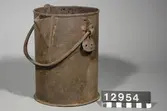
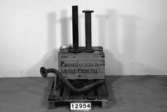
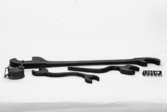
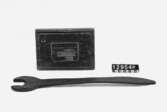

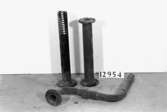
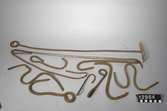


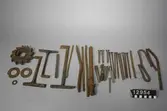
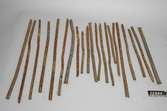
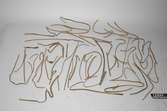

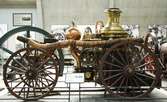

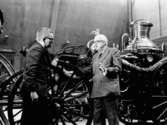
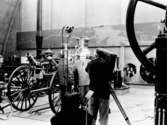


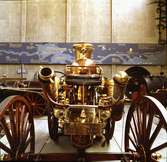

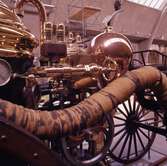
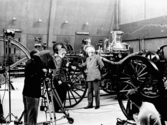


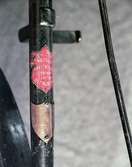

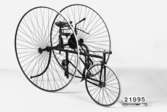
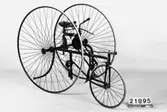
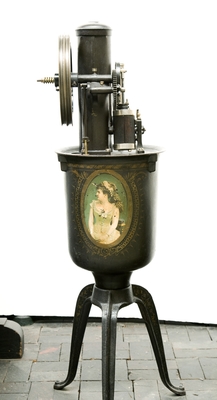
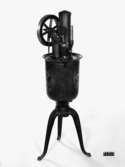
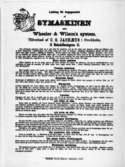
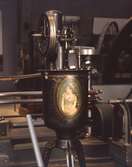
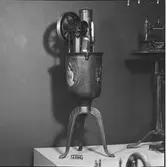
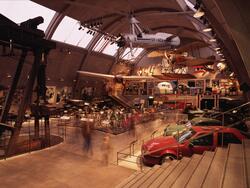
Add a comment or suggest edits
To publish a public comment on the object, select «Leave a comment». To send an inquiry directly to the museum, select «Send an inquiry».